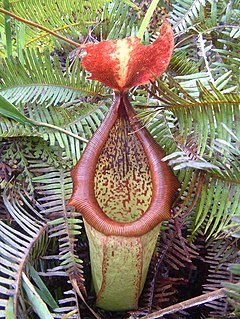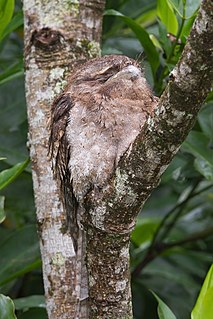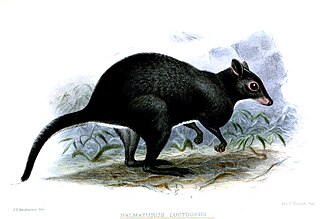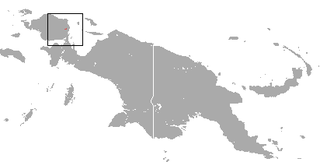
Bandicoots are a group of more than 20 species of small to medium-sized, terrestrial, largely nocturnal marsupial omnivores in the order Peramelemorphia. They are endemic to the Australia–New Guinea region, including the Bismarck Archipelago to the east and Seram and Halmahera to the west.

The common echymipera, or common spiny bandicoot, is a bandicoot. It is long-snouted even by bandicoot standards. The upper parts are a coarse reddish-brown, flecked with spiny buff and black hairs. The tail is short and almost hairless. Length varies between 30 and 40 cm, with the tail accounting for an additional 8 to 10 cm ; the weight is from 0.6 to 2 kg.

The northern brown bandicoot, a marsupial species, is a bandicoot found only on the northern and eastern coasts of Australia and nearby islands, mainly Papua New Guinea. It is not, however, found far inland.

The New Guinean mouse bandicoots or striped bandicoots are members of the order Peramelemorphia. In addition to the named species, there are two currently undescribed members of this genus.

The marsupial family Peramelidae contains all of the extant bandicoots. They are found throughout Australia and New Guinea, with at least some species living in every available habitat, from rainforest to desert. Four fossil peramelids are described. One known extinct species of bandicoot, the pig-footed bandicoot, was so different from the other species, it was recently moved into its own family.

Nepenthes insignis is a tropical pitcher plant endemic to New Guinea and surrounding islands. The specific epithet insignis is Latin for "distinguished" or "remarkable".

Bokermann's nectar bat is a bat species from South America. It is endemic to Brazil. It feeds on nectar, and is listed as an endangered species.

The Papuan frogmouth is a species of bird in the family Podargidae.

Clara's echymipera, or Clara's spiny bandicoot or white-lipped bandicoot, is a species of marsupial in the family Peramelidae. It is found in West Papua, Indonesia and Papua New Guinea. Its natural habitat is subtropical or tropical dry forests.

Menzies' echymipera, or Menzies' spiny bandicoot or Fly River bandicoot, is a species of marsupial in the family Peramelidae. It is endemic to Papua New Guinea.

The long-nosed echymipera, or long-nosed spiny bandicoot, is a species of marsupial in the family Peramelidae. It is found in Australia, Indonesia, and Papua New Guinea. Its natural habitat is subtropical or tropical dry forests.

The striped bandicoot is a species of marsupial in the family Peramelidae. It is found in West Papua and Papua New Guinea. Its natural habitat is subtropical or tropical dry forests. The Striped bandicoot is a host of the Acanthocephalan intestinal parasite Australiformis semoni.

The mouse bandicoot is a species of marsupial in the family Peramelidae. It is endemic to West Papua, Indonesia. Its natural habitat is subtropical or tropical dry forests.

The giant bandicoot is a species of marsupial in the family Peramelidae endemic to Papua New Guinea. Its natural habitat is subtropical or tropical dry forests.

Raffray's bandicoot is a species of marsupial in the family Peroryctidae. It is found in Indonesia and Papua New Guinea. Its natural habitat is subtropical or tropical dry forests.

The gray dorcopsis or gray forest wallaby is a species of marsupial in the family Macropodidae. It is found in West Papua and Papua New Guinea.

The brassy trevally, Caranx papuensis is a species of large marine fish classified in the jack family, Carangidae.

The Arfak pygmy bandicoot is a species of marsupial in the family Peramelidae. It is endemic to the Arfak mountains in the Vogelkop Peninsula of West Papua, in Indonesia. Its natural habitat is subtropical or tropical moist montane forests. The population is unknown and threats may be human expansion and hunting but it is protected by Arfak Reserve.
The eastern striped bandicoot is a species of marsupial in the family Peramelidae. It is found in eastern Papua New Guinea in the Enga Province. It is endemic to mountain forested habitats ranging from 1,000 – 3,600 m in elevation. The eastern striped bandicoot is a terrestrial omnivore.

The Southeastern Papuan rain forests is a tropical moist forest ecoregion in southeastern New Guinea. The ecoregion covers the mountainous center and coastal lowlands of the Papuan Peninsula.


















